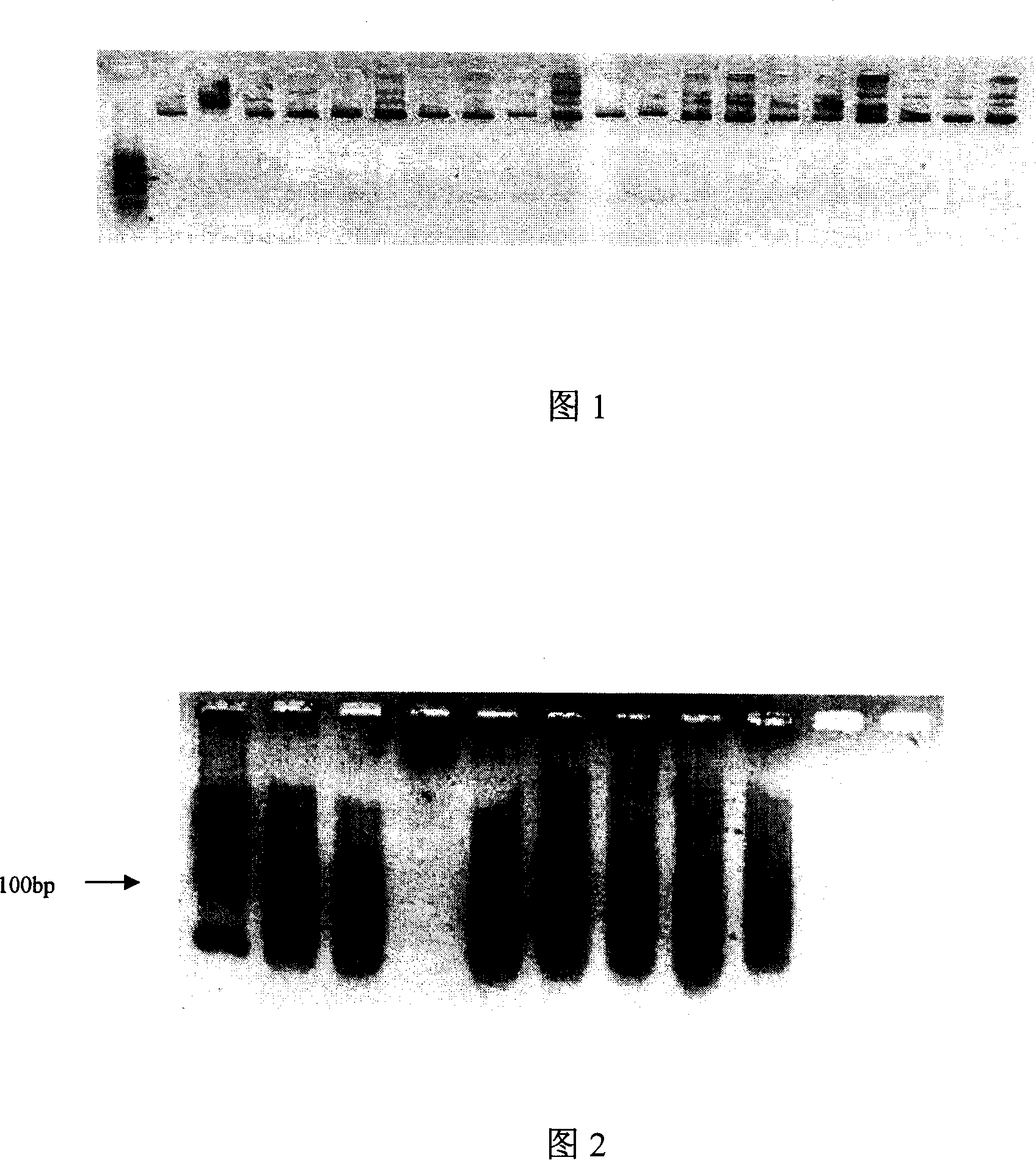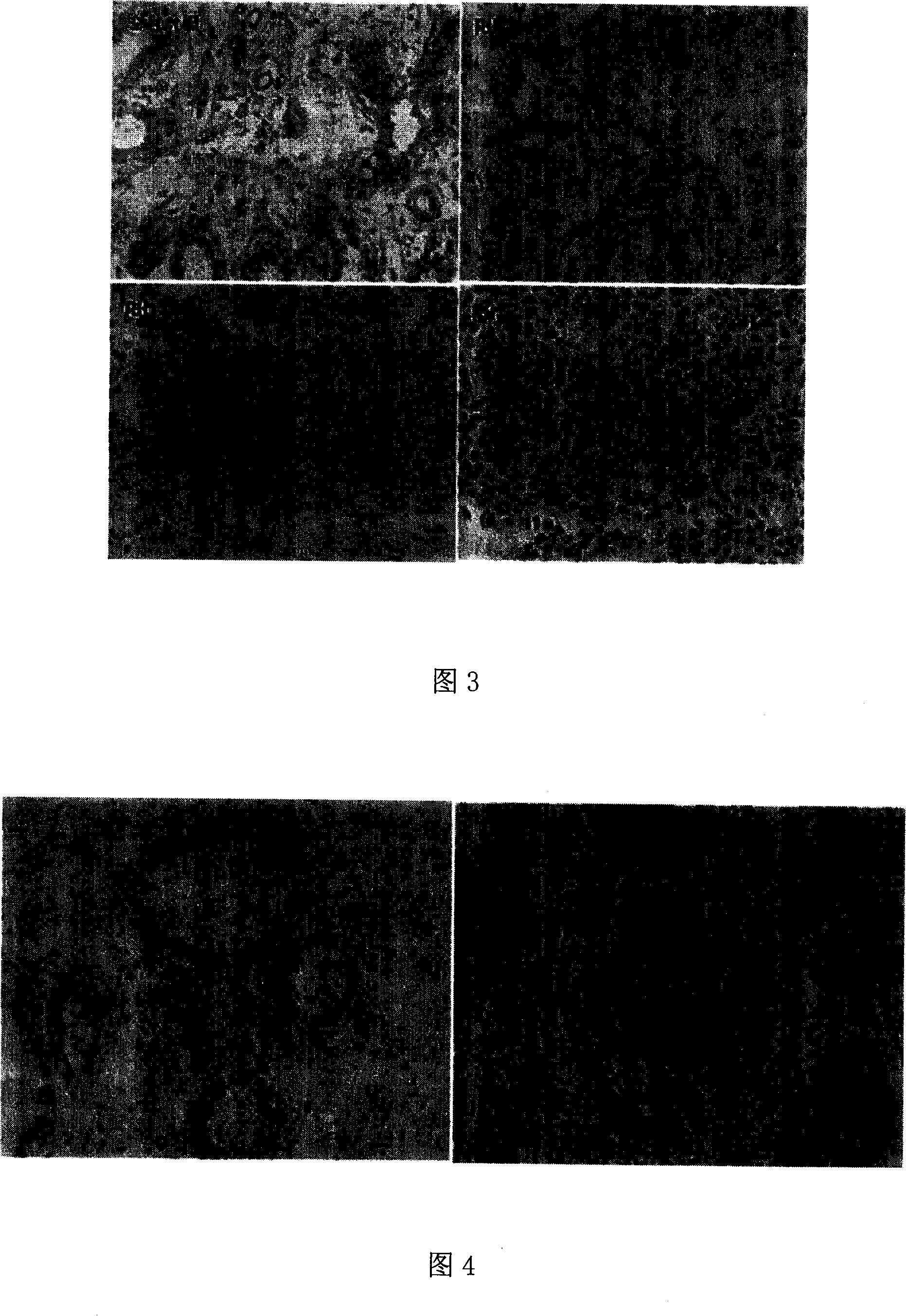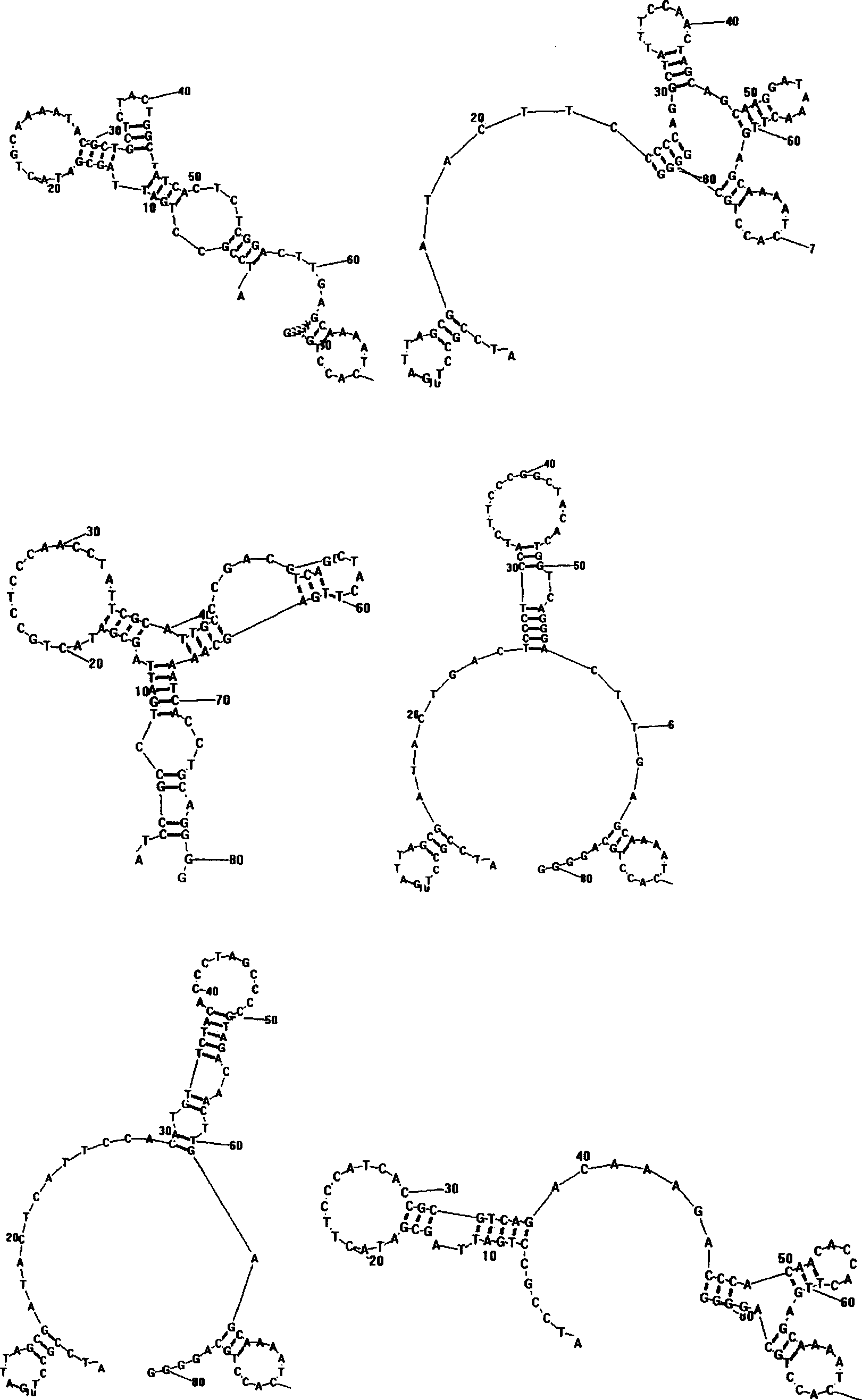Nucleic acid aptamer with high specificity and high affinity to human breast carcinoma tissue, preparation method and application thereof
A nucleic acid aptamer, a technology for human breast cancer, applied in the field of breast cancer diagnosis and targeted therapy, to achieve the effect of easy labeling and high stability
- Summary
- Abstract
- Description
- Claims
- Application Information
AI Technical Summary
Problems solved by technology
Method used
Image
Examples
Embodiment 1
[0041] Example 1: In vitro screening of nucleic acid aptamers specifically binding to human breast cancer
[0042] Use primer 1 and primer 2 to amplify the single-stranded DNA library: the concentration of primer 1 and primer 2 is 100 pmol, and the amplification conditions are: pre-denaturation at 94°C for 3 minutes, then denaturation at 94°C for 40 seconds, annealing at 65°C for 1 minute, and extension at 72°C for 2 minutes. Cycle 30 times, and finally extend for 7 minutes at 72°C. Combine the amplified dsDNA product labeled with biotin at the 5' end with streptavidin magnetic beads, hold at room temperature for 30 minutes, then act with 0.15 mol / L NaOH for 15 minutes to denature and melt the dsDNA, and obtain ssDNA by magnetic separation. Incubate at 95°C for 5 minutes, place in ice for 2 minutes, and place at room temperature for 10 minutes to form an ssDNA library. The pathological sections were routinely dewaxed to water, and the prepared ssDNA library was reverse-screen...
Embodiment 2
[0045] Example 2: In vitro screening of nucleic acid aptamers specifically binding to human breast cancer
[0046] Use primer 1 and primer 2 to amplify the single-stranded DNA library: use asymmetric PCR, the concentration ratio of primer 1 / primer 2 is 100:1, and the amplification conditions are: pre-denaturation at 94°C for 3 minutes, then denaturation at 94°C for 30 seconds, and annealing at 65°C for 45 seconds , cycled 35 times, extended at 72°C for 1 min, and finally extended at 72°C for 7 min. The obtained product is mainly ssDNA, reacted at 95°C for 3 minutes, placed in ice for 2 minutes, and left at room temperature for 10 minutes, which is the ssDNA library. Breast cancer pathological sections were routinely dewaxed to water, the prepared ssDNA library was reverse-screened with normal breast tissue, and then incubated with human breast cancer tissue. ssDNA was eluted from human breast cancer tissue with elution buffer (20mmol / L Tris-HCl, 4mol / L isothiocyanate, 1mmol / L...
Embodiment 3
[0049] Embodiment 3: The nucleic acid aptamer of screening is used for the detection of breast cancer
[0050] Asymmetric PCR was carried out with primers 3 and 4, the concentration ratio of primer 3 (100 pmol) / primer 4 was 200:1, and the amplification conditions were as follows: 94°C pre-denaturation for 3 minutes, Then denature at 94°C for 30 s, anneal at 65°C for 45 s, extend at 72°C for 1 min, cycle 35 times, and finally extend at 72°C for 7 min. The obtained product was mainly biotin-ssDNA, which was reacted at 95°C for 3 minutes, placed in ice for 2 minutes, and left at room temperature for 10 minutes, and used as a detection reagent for later use. Human breast cancer pathological sections were routinely dewaxed to water, a blank control group was set up, 0.3%H 2 o 2 - Block endogenous peroxidase with methanol solution for 30 minutes, wash with TBS for 5 minutes, incubate with the prepared DNA aptamer at room temperature for 1 hour, wash with TBS for 3×5 minutes. Sect...
PUM
 Login to View More
Login to View More Abstract
Description
Claims
Application Information
 Login to View More
Login to View More - R&D
- Intellectual Property
- Life Sciences
- Materials
- Tech Scout
- Unparalleled Data Quality
- Higher Quality Content
- 60% Fewer Hallucinations
Browse by: Latest US Patents, China's latest patents, Technical Efficacy Thesaurus, Application Domain, Technology Topic, Popular Technical Reports.
© 2025 PatSnap. All rights reserved.Legal|Privacy policy|Modern Slavery Act Transparency Statement|Sitemap|About US| Contact US: help@patsnap.com



